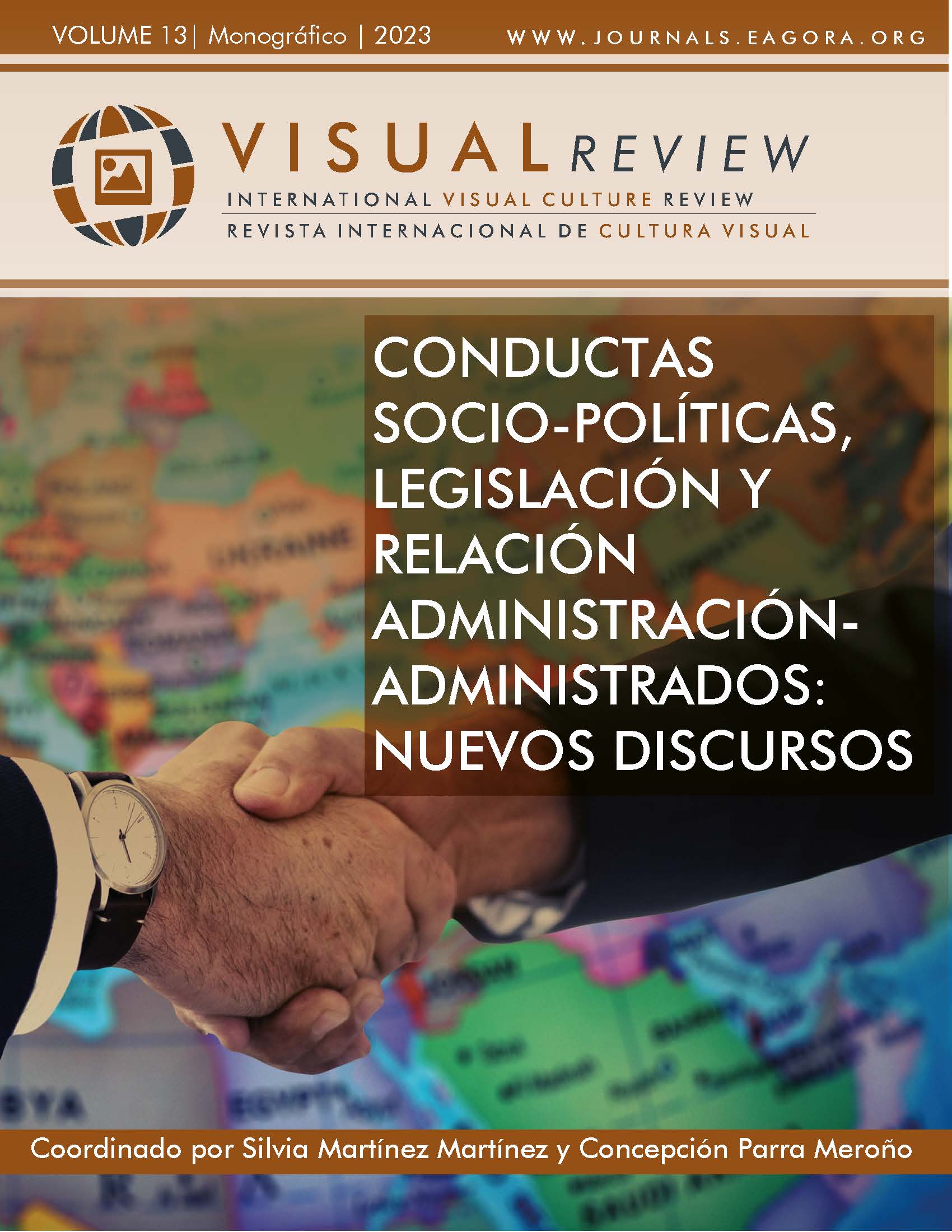Gender parity versus equity in the 21st century: The Crisis of Modern Societies
The Crisis of Modern Societies
DOI:
https://doi.org/10.37467/revvisual.v10.4556Keywords:
Gender, Society, Crisis, Parity, EquityAbstract
The position of women today is a recurrent and differentiating theme. One of the pillars of democratic renewal and the legitimacy of democratic law considers gender parity. However, theoretically it undermines the fundamental key to democracy: the principle of equality. Because this is the first and last architectural link of any demo-cratic structure, it requires a series of instruments and other established principles - such as freedom - to become the principle of Equity. We show how equity introduces a set of remedial measures that contribute to the realization of a fairer society.
Downloads
Global Statistics ℹ️
|
449
Views
|
329
Downloads
|
|
778
Total
|
|
References
Achin, C. L. (2006). Femmes et militarism. En C. L. Achin, Femmes in Politique (Vol. Repères, págs. 32-59). Paris, Francia: La Découverte. Recuperado el 21 de 02 de 2022, de https://www.cairn.info/femmes-en-politique--9782707147417-page-32.htm DOI: https://doi.org/10.3917/dec.achin.2006.01
Benvenisti, E. &. (01 de 01 de 2017). Embracing the tenssion between national and international human rights: the case for discordant parityEmbracing the tension between national and international human rights law: The case for discordant parity. International Jourrnal of Constitutional Law, 15(1), 36-59. doi:https://doi.org/10.1093/icon/mox002 DOI: https://doi.org/10.1093/icon/mox002
Elomäki, A. (20 de 06 de 2021). ‘It’s a total no-no’: The strategic silence about gender in the European Parliament’s economic governance policies. International Political Science Review, 00 (0), 15. doi:https://doi.org/10.1177/0192512120978329 DOI: https://doi.org/10.1177/0192512120978329
Fredman, S. &. (2015). Gender equality and human rights. UN Women. UN Women flagship report. Recuperado el 12 de 04 de 2022, de unwomen.org: https://www.unwomen.org/sites/default/files/Headquarters/Attachments/Sections/Library/Publications/2015/Goldblatt-Fin.pdf DOI: https://doi.org/10.18356/e50499ba-en
Henrion, R. (2001). Les femmes victimes de violences conjugales: le rôle des professionnels de santé. Paris: La documentation française. Recuperado el 23 de 04 de 2022, de https://www.vie-publique.fr/rapport/24751-les-femmes-victimes-de-violences-conjugales-le-role-des-professionnels
Kiejman, L. R. (1985). Le féminisme sous la troisième république: 1870-1914. Matériaux pour l´histoire de notre temps, Histoire des femmes et du féminisme, 8-11. Recuperado el 12 de 03 de 2022, de https://www.persee.fr/doc/mat_0769-3206_1985_num_1_1_403977 DOI: https://doi.org/10.3406/mat.1985.403977
Lépinard, É. (2018). The French Parity Reform: The Never-Ending Quets for A New Gender Principle. En E. R.-M.Lépinard, & C. U. Press (Ed.), Transfomrer Gender Cityzenship. The Irresistible Rise of Gener Quotasin Europe (págs. 62-93). Cambridge, Massachussetts, USA: Cambridges Studies in Law and Society.doi:https://doi.org/10.1017/9781108636797 DOI: https://doi.org/10.1017/9781108636797.003
Mathieu, B. V. (2016). Jurisprudence Constitutionnelle, France. Reue europeenne de droit public, 28(2), 713-742.
Meyer, M. K. (1999). Gender politics in global governance. (M. K. Meyer, Ed.) New York: Oxforf: Rowman & Littlefield Publishers.
Mishkin, F. (1984). At real interesest rates equal across countries? An empiricl investigation of international parity conditions. The journal of Finance, 39(5), 1345-1357. DOI: https://doi.org/10.1111/j.1540-6261.1984.tb04911.x
Riot-Sarcey, M. (2008). Histoire du féminisme (Vol. Repéres). La Découverte. DOI: https://doi.org/10.3917/dec.sarce.2008.01
Rodríguez, R. B.-M. (2008). The gender of representation: on democracy, equality, and parity. International Journal of Constitutional Law, 6((2)), 287-316. doi: https://doi.org/10.1093/icon/mon007 DOI: https://doi.org/10.1093/icon/mon007
Zafar, M. V. (2017). From Parity to Preferences-based Notions of Fairness in Classification. 31st Conference on Neural Information Processing System (NIPS) (págs. 1-11). Long Beach, CA, USA: s/e. doi:https://doi.org/10.48550/arXiv.1707.00010
Downloads
Published
How to Cite
Issue
Section
License
Those authors who publish in this journal accept the following terms:
-
Authors retain copyright.
-
Authors transfer to the journal the right of first publication. The journal also owns the publishing rights.
-
All published contents are governed by an Attribution-NoDerivatives 4.0 International License.
Access the informative version and legal text of the license. By virtue of this, third parties are allowed to use what is published as long as they mention the authorship of the work and the first publication in this journal. If you transform the material, you may not distribute the modified work. -
Authors may make other independent and additional contractual arrangements for non-exclusive distribution of the version of the article published in this journal (e.g., inclusion in an institutional repository or publication in a book) as long as they clearly indicate that the work was first published in this journal.
- Authors are allowed and recommended to publish their work on the Internet (for example on institutional and personal websites), following the publication of, and referencing the journal, as this could lead to constructive exchanges and a more extensive and quick circulation of published works (see The Effect of Open Access).













